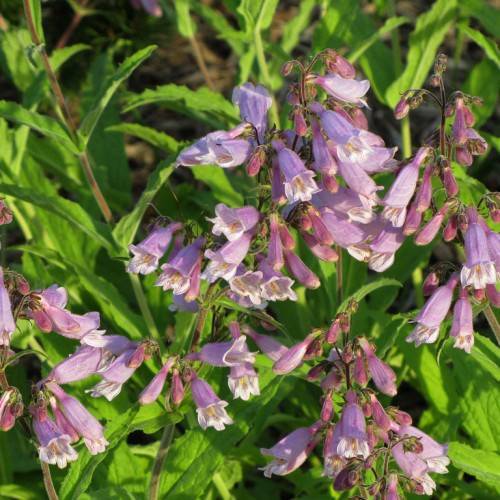
beardtongue
Penstemon canescens
Cycle:
Herbaceous Perennial
Watering:
Minimum
Hardiness Zone:
5 - 8
Flowers:
Flowers
Sun:
Full sun
Leaf:
Yes
Growth Rate:
Low
Maintenance:
Low
Drought Tolerant:
Yes
Care Level:
Medium
watering
Beardtongue (Penstemon canescens) is a drought-tolerant plant, so it should not need a lot of water. During the active growth period (spring and summer), water the plant enough so that the top inch of soil is moist, but not soggy. When there isn't enough rain, it should need watering every 5-7 days. As fall and winter approach, reduce the amount of watering to every 2-3 weeks, since the plant's growth rate slows down. During periods of excessive heat and drought, be sure to provide supplemental irrigations to keep the plant from becoming stressed.
sunlight
Beardtongue (Penstemon canescens) grows best in areas with full sun exposure, meaning at least 6 to 8 hours of direct sunlight each day. The plant should be placed in an area that does not receive too much shade from structures, nearby trees or shrubs. Too little sun can cause stunted growth and pale blooms. Direct sunlight will also help the Beardtongue plant bloom profusely during peak summer season. It is recommended to grow Beardtongue in an area that receives morning sun and has some shade during the afternoon and hot days.
pruning
Beardtongue (Penstemon canescens) should be pruned in late winter or early spring, right around the start of bud break, with any dead or damaged stems removed. Prune them back to the desired size and shape, cutting away all spindly, leggy stems to keep the shape full and tight. If the plants have become overgrown or woody, trim the entire plant back by up to 1-third, focusing on removing the oldest stem and flower buds, which will encourage new shoots and flowers. Pruning beardtongue should be a light touch, as over-pruning can reduce the amount of flowers produced and heighten the risk of disease and pests.
